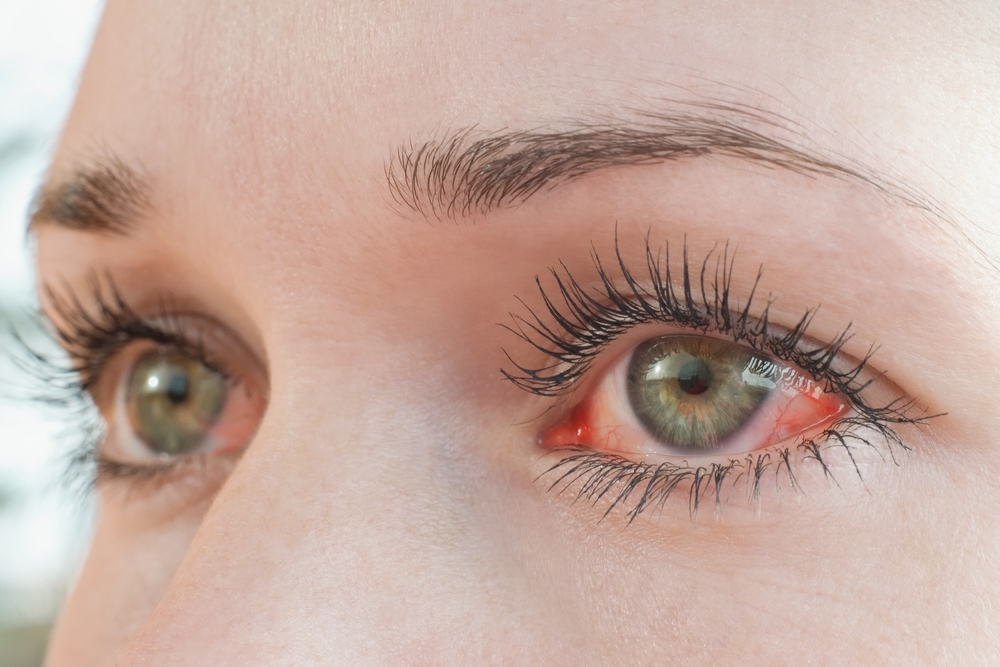Is Dry Eye an Autoimmune Condition?

If your eyes constantly feel dry or if they often burn, itch, or feel like they have sand in them, you might have dry eye. While this eye condition is extremely common, its symptoms might lead you to believe it could be caused by an underlying autoimmune condition.
It may make you feel better to know that dry eye, in and of itself, is not an autoimmune condition. It is most often caused by other factors, including aging and environmental conditions.
While dry eye is not an autoimmune condition, it can be the symptom of an autoimmune disorder, such as Sjögren’s syndrome. Keep reading to learn more about dry eye, including how it’s connected to autoimmune conditions!
What is Dry Eye?
Dry eye is an eye condition that occurs when your eyes don’t produce enough tears or produce poor-quality tears. Your eyes need a certain amount of high-quality tears to stay adequately lubricated.
High-quality tears have three layers: an oil layer, a water layer, and a mucin layer. These layers work together to produce tears that lubricate, nourish, and protect your eyes.
Other common symptoms, in addition to the ones mentioned above, include blurry vision, sensitivity to light, difficulty seeing at night, eye fatigue, watery eyes, difficulty wearing contact lenses, and pronounced redness. If left untreated, chronic dry eye can lead to inflammation that can harm the inner structures of the eye and cause injuries on the eye’s surface, like corneal abrasions.
What is Sjögren’s Syndrome?
Sjogren’s syndrome is an immune system disorder that can occur alongside other autoimmune disorders. In Sjögren’s syndrome, the immune system attacks the glands that make tears and saliva, preventing them from producing enough of the fluids that keep the eyes and mouth moist.
While the eyes and mouth are most affected by Sjögren’s syndrome, it can also affect other parts of the body, causing muscle and joint pain and fatigue. As it progresses, it can damage the lungs, kidneys, and nervous system.
About half of the people diagnosed with Sjögren’s syndrome have another autoimmune disease like rheumatoid arthritis, lupus, or scleroderma. It is estimated that at least four million Americans are living with Sjögren’s syndrome, making it one of the most prevalent autoimmune diseases.
What Are the Other Causes of Dry Eye?
If your dry eyes are not a symptom of Sjögren syndrome, they may be caused by one of these common causes:
- Aging
- Forgetting to blink when looking at an electronic screen for a long time
- Dry indoor air from heaters or air conditioners
- Hormonal changes during pregnancy or after menopause
- Use of contact lenses
- Certain medications, including antihistamines, diuretics, and birth control pills
How is Dry Eye Treated?
The best treatment for this condition depends on what is causing your dry eye. For mild cases, dry eye can usually be effectively treated with over-the-counter or prescription eye drops which keep eyes comfortably moist.
Another option is a heat therapy treatment, like iLux. During an iLux treatment, gentle heat and pressure are applied to unblock the eye’s meibomian glands, which help produce high-quality tears. If you have more severe dry eyes, surgical options, like closing the tear drainage canals or implanting punctal plugs, can reduce tear loss.
If dry eye affects the comfort of your vision, you can get relief by scheduling an appointment with an experienced and knowledgeable eye care provider like Berg-Feinfield Vision Correction. A comprehensive eye exam is the best way to ensure that your dry eye is not a symptom of an underlying autoimmune condition.
Do you want to get to the root of your dry eye symptoms? Schedule an appointment at Berg Feinfield Vision Correction in Burbank, CA, today!








